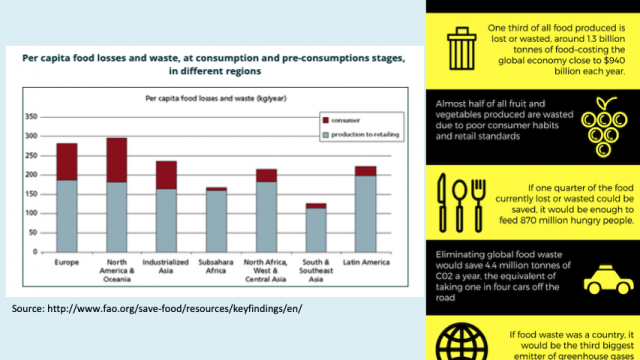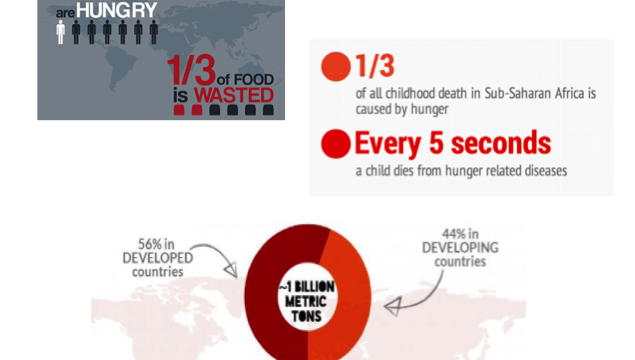Why is food waste and loss a big problem?
FAO (Food and Agricultural organization of the United Nations) estimated that around 1/3 of the world’s food was lost or wasted every year. 30% for cereals, 40-50% of the fruits and vegetables, 20% for oil seeds, meat and dairy products are lost and wasted every year.
Food waste is an economic disaster:
Between 33-50% of all food produced globally is never eaten, and the value of this wasted food is worth over $1 trillion.
Food waste is morally wrong:
At the same time, 1 in 9 people on the planet are starving or malnourished. Each and every one of them could be sufficiently fed on less than a quarter of the food that is wasted in the USA, UK and Europe each year.
Food waste is an environmental disaster:
When food is disposed in a landfill it rots and becomes a significant source of methane, a potent greenhouse gas with 21 times the global warming potential of carbon dioxide. Food that is never eaten accounts for 25% of all fresh water consumption globally.
Article Review: Read this article (Click here) and note down five points in your class work notebook.


